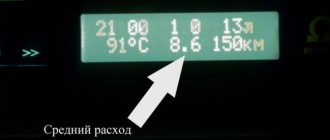- December 23, 2020
- Cars
- Nadezhda Zorina
"Niva-2121" is one of the most famous Soviet and Russian SUVs. This car first appeared in the second half of the 20th century. "Niva-2121" is still being produced. But new models of this SUV are already available with injection engines. Models with carburetor engines can also be found now, but only on the secondary market.
Quite often, many motorists wonder which Niva-2121 is better - with an injector or a carburetor? So, with the Niva injector it is more reliable.
Features of a carburetor car
Before deciding on the choice of a carburetor or injection Niva, it is very important to familiarize yourself with the technical characteristics of both SUV models.
The very first Niva-2121 engine was taken from the Zhiguli. In both the first and second cars, the engine had a large combustion chamber volume, that is, its working volume was 1580 cubic centimeters. Thanks to this engine, it was possible to develop power up to 80 horsepower. And the car could accelerate to 100 km/h in just 20 seconds.
Many novice motorists quite often ask specialists: what is the fuel consumption of the Niva-2121? The carburetor installed on the car affects the difference in fuel consumption compared to a car with an injection engine. Let's consider this nuance in more detail.
For example, judging by the technical data sheet of the car, then 13 liters is the fuel consumption of the Niva-2121. The carburetor, or rather its presence, greatly influences this indicator.
Over time, the engine became more and more modernized. And such an engine began to be numbered 21213. The working volume of the new engine became 1690 cm3, while the power of the power unit amounted to 83 horsepower.
Thanks to the new engine, the car has become more playful. It now takes 18 seconds to accelerate to 100 km/h. It is worth noting that with the introduction of the new engine, fuel consumption has decreased significantly: in contrast to the fuel consumption of the Niva-2121 with a carburetor (1.6 l), it has become less.
For example, if you look at the technical data sheet of an SUV, you will see that the manufacturer claims 11 liters. And as car owners themselves note, this figure is 13 liters.
In winter, the fuel consumption of the Niva-2121 with a carburetor is higher, since at this time it is necessary to warm up the car quite often and for a long time.
How not to reduce fuel consumption
It is not recommended to reduce consumption and consumption on your own unless you have the appropriate knowledge and experience . Also, there is no need to make radical changes (switching from gasoline to gas) when this is not clearly necessary.
Make technical replacements or changes in design - here all actions must be coordinated with specialists in the workshop or service station. They will also tell you how much fuel savings will be when choosing one version or another. Making changes to the firmware yourself can cause harm or reduce performance slightly.
Features of an injection car
The Volzhsky plant completely switched to injection engines in 2005. These changes affected not only the Niva-2121 SUV, but also many other cars. The new engine received a new number - 21214. The volume of the new gasoline unit began to be 1690 cm3. As for its power, it remained the same, the same as the carburetor - 83 horsepower. The acceleration remained the same, nothing has changed.
The fuel consumption of the Niva-2121 with an injector decreased, in contrast to the carburetor engine, by about 1.5 liters. This is already a big advantage compared to previous Niva models.
As for the average fuel consumption of the Niva-2121 per 100 km, these figures look like this:
- If you drive exclusively on the highway, then 8.3 liters will be spent per 100 km.
- If you drive exclusively around the city, then per 100 km the fuel consumption will be 12 liters.
- And if you drive in mixed mode, 100 km will require 10 liters of gasoline.
These data were obtained under standardized conditions using special measuring equipment.
Today, Niva-2121 is produced with an engine whose index is now 21214-28. The volume of the working engine is now 1774 cm3. The power of the new engine is 92 horsepower. And the SUV began to accelerate a little faster; it could accelerate to 100 km per hour in just 17 seconds. At the same time, fuel consumption does not exceed 10 liters.
Option 2 of 4: Saving fuel
1. When refueling a car, do not fill the tank to the top. It is advisable that it be filled between half and quarter tank. And driving on an empty tank is very harmful to your car. The first thing that suffers is the fuel pump. And keep in mind, a tank filled with 60 liters increases the weight of the car by 45 kg.
2. When changing oil, give preference to synthetic, using additives. This reduces Niva consumption by approximately 15% (subject to the requirements of the instructions). Thanks to additives, the viscosity of the oil is stabilized, making engine operation smoother, because the lubrication process involves the entire volume of oil, and not part of it.
3. When choosing fuel, give preference to the best. Do not mix different types of fuel in one tank. Using cheaper gasoline allows you to save money, and the fact that cheap gasoline contains a large amount of ethanol indicates a significant overconsumption of fuel. As an experiment, you can fill up with the same amount of gas, determine which distance you can cover, and what is generally best for your car.
4. The use of synthetic oils will enable fuel savings of approx. by 5% . You should not ignore the scheduled oil change; this can result in excessive fuel consumption and damage to the engine. If for some reason you cannot use synthetic oil, then purchase the lightest one. For example, 5W-30 will have a greater effect than 15W-50. Watch how the engine behaves while driving. Sometimes engines running on synthetic oil run harder.
5. A significant increase in Niva consumption was noticed when using an air conditioner within the city. However, when driving on the highway in a car with air conditioning, fuel economy will be greater than with the windows open.
The air resistance when driving with the windows open is higher than the power consumed when using the air conditioning.
6. A visual assessment of fuel consumption can be given by knowing how loaded the engine is. Using air conditioning, sudden and frequent increases in speed, and traveling at high speeds have a serious impact on fuel consumption, but these are not the main indicators. Pay attention to engine speed. It's like monitoring your pulse by assessing your heart function.
What is a carburetor
If we compare the carburetor Niva and the injection one, we can conclude that the first is more archaic and old. The carburetor is the main component in this system. That is, it is this mechanism that, during operation, mixes air with a portion of gasoline, thereby creating a flammable mixture. The system itself is a simple device. But, despite this, many car owners are not entirely happy with this engine, since quite often it let them down.
A carburetor engine contains: a float, jets, and needles. It is worth noting that all these mechanisms require regular cleaning and regulation.
Niva 2131
In 1995, a more spacious version of the Niva appeared - VAZ 2131, with a five-door body lengthened by 500 mm. This made it the second most popular variant of this family of cars. Lengthening the base made it possible to create a more comfortable interior and increase the fuel tank, since the weight of the car increased, gasoline consumption on the VAZ Niva also became higher, and the dynamic performance turned out to be similar to the VAZ 2121 model.
The base was equipped with a 1.7 carburetor engine with 80 horsepower with mechanics and has gas consumption:
- on busy streets 13.7;
- averages 12 l;
- on a free road 9.8.
Disadvantages of the carburetor
The main disadvantages include the following:
- This engine is unreliable. That is, almost every season it is necessary to service the carburetor and adjust it.
- Such a motor is highly dependent on air temperature. Mostly problems arise in winter with such an engine. For example, if you overfill the spark plugs, it will be impossible to start the car. To do this, you will have to unscrew them and dry them. In addition, in winter the float often gets stuck, this is due to condensation. In the summer, many Niva owners with a carburetor engine are faced with such a problem as an overheated fuel pump.
- Low productivity. To increase the engine's potential, it is necessary to spin the engine to high speeds.
- Very high fuel consumption.
It is worth noting that, despite the fact that this power system is quite simple and repairable, it requires special attention. Many car owners should prepare in advance for the fact that they will have to rebuild the carburetor several times every year.
What to pay special attention to
Monitor tire pressure. If the tires are not inflated enough, then the surface area in contact with the road surface increases, which increases the fuel consumption of the VAZ 21213 per 100 km.
Experienced drivers know that it is better to use an economical driving style, without sudden acceleration and braking. It is better to move smoothly with a gradual increase in speed and stop. Body aerodynamics should be minimal. To reduce fuel consumption, it is better to remove all unnecessary elements.
What has changed with the arrival of the new engine?
Today, Niva-2121 is produced only with injection engines. New engines began to use distributor injection, with each cylinder having its own injector. If previously all engine elements were mechanical, now they have become electronic. An electronic control unit also appeared in the SUV.
In order for the injection engine to always operate stably, it is necessary that there are sensors for monitoring air, detonation, and throttle position. This device also includes a crankshaft position sensor.
Although the system may seem very complicated, in reality it is not at all like that. The mechanical part of the motor has not become more complicated. In the injection model, instead of a carburetor, injectors and a fuel rail appeared, and as for the throttle valve, it is now located separately. Electronic sensors appeared.
Chevrolet Niva
This model was a joint development of the Russian company AvtoVAZ and the American corporation General Motors. The car is considered domestic, but is produced under the foreign Chevrolet brand.
Cars under this name have been produced since 2002 and are a sought-after product on the Russian automobile market. All-wheel drive is provided as standard. On the Chevrolet Niva, the main engine is a four-cylinder 1.7-liter gasoline unit with a capacity of 80 horsepower. The transmission is mechanical, five-speed. Maximum speed – 140 km/h.
Main advantages of the injector
The advantages of the injection Niva include the following:
- High with an injection engine is much faster compared to previous models.
- The operation of the internal combustion engine is stable. That is, due to the fact that the engine has IAC, many car owners have forgotten what floating speed is. Models with a carburetor engine always have real problems with this.
- Low fuel consumption of the Niva VAZ-2121. With the advent of the injection engine, the car began to consume about 20% less fuel.
- This engine is the most reliable. That is, such a motor does not need regular tuning, cleaning, or replacing jets. The only thing that the owner of a Niva-2121 car may need to do is clean the throttle valve. But this procedure is not mandatory. Experts recommend doing this in situations where the car picks up high speed at idle.
Summing up
Before purchasing, you should always consider gas mileage and the approximate cost of maintenance. SUVs themselves are expensive cars, and not everyone can afford such a car. Basically, for city driving, small runabouts will be the most budget-friendly option.
Their circulation cycle in the cooling system warms up very quickly and consumes little fuel, which makes them very affordable and economical in winter. Cars need to be roughly divided into groups and bought the one that is ideal for you, depending on the purpose and territory of driving. Based on your personal financial capabilities, you need to understand which model you can afford and what exactly you want.
Read news about the new Niva
- The most powerful cars with naturally aspirated engines
- UAZ or Niva - which is better, car characteristics and features ::
- How to reduce Niva fuel consumption
- How to reduce Niva consumption
- The modernized Lada Niva Legend (4x4) 2021 was shown on the Internet
- Lada 4×4 Bronto - sales stopped, new details » Lada.Online - all the most interesting and useful about LADA cars
- Description of the instrument panel Lada 4×4 (VAZ 2121, 2131) » Lada.Online - all the most interesting and useful about LADA cars
- LADA Niva – Operating manual – Official LADA website
Injector disadvantages
As for the disadvantages, such an engine does not have many of them.
Due to the fact that a lot of electronics have appeared in the engine system, car owners may encounter malfunction of control sensors.
In situations where the SUV begins to consume a large amount of fuel, it is definitely recommended to recheck the mass air flow sensor. And if the engine no longer maintains normal speed at idle, then the IAC may be to blame.
And if the engine refuses to start, then it is quite possible that the contact has come loose from the crankshaft position sensor.
It is worth noting that although such problems do occur, they do not happen that often.
You can diagnose these problems yourself, using the simplest multimeter. To do this, it is enough to measure either the resistance or the contact voltage of any of the sensors.
From this we can conclude that breakdowns in most cases occur due to malfunctions of the electronics. As for the mechanical part, it does not raise any questions.
VAZ 21213
This model is another modification of the base Niva 2121. This time, the manufacturers made changes to the aerodynamic parameters of the car and tried to reduce fuel consumption. Production of this car began in 1993 and continued until 2007.
In the appearance of the car, new taillights appeared, the bumpers received a slightly different shape, and the interior became more modern. Niva 21213 was equipped with four-cylinder engines with a volume of 1.7 liters and a power of 82 hp. Fuel was supplied using a new two-barrel Solex carburetor. The car was driven using a traditional five-mode manual transmission. Such changes allowed 21213 to accelerate to 160 km/h. But the main thing is that this Niva has become much more economical.
| Engine | Consumption (city) | Consumption (highway) | Flow (mixed) | Type of fuel |
| 1.7 MT 82 hp (Mechanics) | 12.1 | 8.5 | 10.2 | Petrol |
Niva gas costs, difference
Propane consumption, savings
| Volume | Transfers | Gas type | Gas consumption by road type | Refueling for 1000 km, mixed mode | ||||
| In the city | On the road | Mixed | Petrol | Gas | Difference | |||
| 1.7 | Mechanics | CIS | 15.4 | 8.8 | 11.0 | 3 742 ₽ | 2 047 ₽ | |
| LPG - liquefied petroleum gas (propane). Gas price in rubles per liter: CIS - 18.61 rubles. | ||||||||
Compressed natural gas is consumed in city mode at the speed of gasoline, and on the highway it is 20% slower. CNG is cheaper than LPG by one and a half to two rubles per liter.











